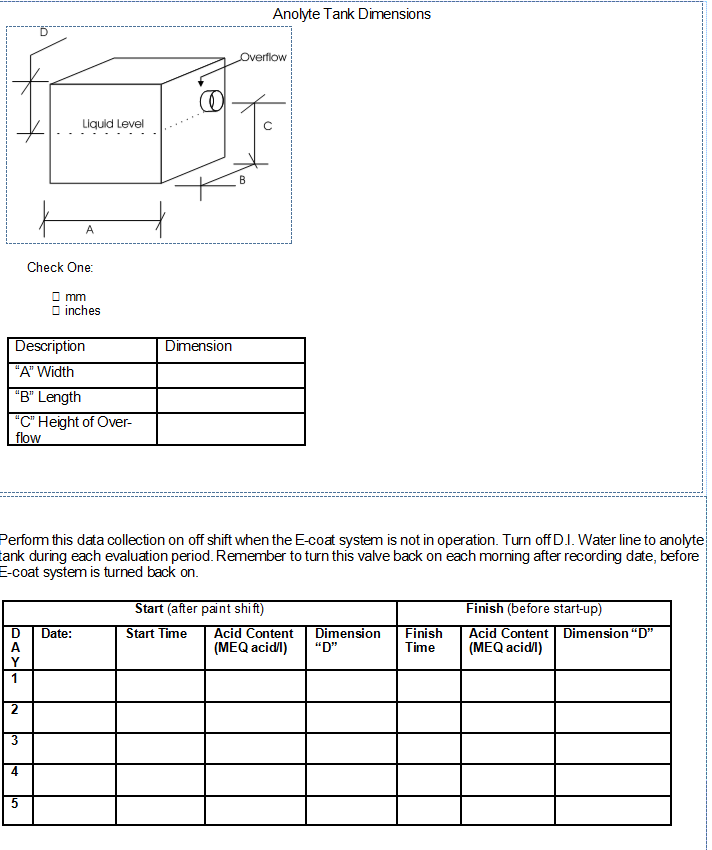Anolyte Diffusion Analysis
Product Support and Customer Service
For Further support visit our Contact Page
Safety
Think and act in a safe manner. Always disconnect power and use a lockout before you work on the E-coat system, or any of the related subsystems. Observe any confined space conditions. Use the appropriate safety equipment and clothing for the task. Please carefully read all the instructions listed below to familiarize yourself with the project before attempting to perform any of the work.
Required Materials
- Titration Equipment, Titration Solutions
Required Tools
- None
-
General
It is not unusual for the pH of a cathodic E-Coat bath with new Anode Cells to operate on the high side. This can be offset with the addition of acid to adjust the E-Coat bath - If the pH of the ED bath is low and remains low. The E-Coat system loses acid in one of four ways: U/F permeate purges; dragout of rinse from the post rinses; some acid in the E-Coat film; and the anolyte system. Generally, the first three losses are fixed for each production rate and product mix. Acid is always being added whenever replenishment paint is added. In order to achieve a better balance, the following actions are possible (listed in order): If using precious metal anodes some anolyte can be metered back to the paint tank. Reduce pressure drop across cell (Low Profile Cell only). Increase conductivity of anolyte (marginal affect). Use bare anodes (Last resort. Leads to creation of dirt bits in paint bath.)
The purpose of this service note is to investigate the rate of diffusion of acid from the Cell into the E-Coat bath. The diffusion rate is the greatest during periods when there is no cathode in the E-Coat bath. When the E-Coat process is on-going, the voltage gradient and resulting polarization around the Cell is much, much greater than the diffusion process, which is about the same as osmosis. Use the attached form to take readings for five (5) consecutive off periods. It is necessary to measure the acid concentration and report the figures in MEQ acid/liter.
BULLETIN 990144
